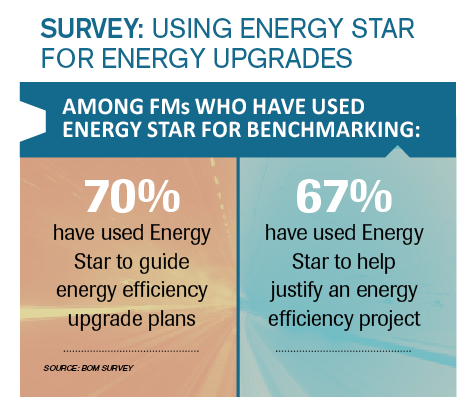Careful Assessment of Energy Options Can Show What Steps to Take
When considering ways to cut energy costs, facility managers are confronted by myriad choices: energy efficiency upgrades, renewable energy alternatives and energy procurement options. All may yield financial savings, but which comes first — or last? Understanding how they may interact could increase the return on investment (ROI) while avoiding some costly disappointments.
Talk to a contractor, and you may be told to first change out all your T12 fluorescent lighting, or install variable speed drives on HVAC fans, or perhaps replace your boiler. In a world filled with guys carrying hammers, expect them to look for the nails they like to pound.
On the other hand, a renewables vendor may tell you to start by adding photovoltaic panels on your roof, or installing a geothermal heat pump, before a hefty state or utility rebate program gets maxed out by others doing so.
An energy broker may claim you can save more by buying your fuel or electricity through him than you'll ever save from upgrading equipment, so that's where you should start.
But the best place to begin is with a thorough energy analysis covering all those bases. Such an analysis, when conducted by an independent professional energy consultant, generally prioritizes options (or combinations thereof) based on how quickly they return the investment as savings (i.e., ROI). Doing so may provide guidance that alters both the choices and the order in which they should be pursued.
In the past, analyses of energy cost, use, and options were called "energy audits." That term fell out of favor because it sounded too much like an investigation into one's finances. Today's term is "assessment." Along with a study of energy efficiency choices, the best assessments include an examination of appropriate renewable energy options and energy procurement strategies. It will examine their potential interactions, and optimally sequence them, rather than assuming a linear order (e.g., efficiency, then renewables, then energy procurement).
An assessment is guided by a financial criterion, beyond which an option is unlikely to be pursued. Where cost cutting is the priority, such a criterion may be ROI, payback period, life cycle cost or total cost of ownership. Options (or combinations) suggested in the assessment should be shown in the order of highest to lowest benefit relative to cost, regardless of option type. This is especially important because some low-cost options may reduce the potential savings of others, pushing them beyond the stated criterion. If a different (or second) criterion (e.g., percentage reduction in carbon footprint) is desired, it too should be provided in advance of the assessment.
In the past, establishing energy pricing to be used in the assessment was easy: Calculate the average price from past utility bills (plus perhaps an annual escalator) as the basis for future costing. Energy prices rarely if ever went down, so future pricing was likely to be the same or higher. Now, however, that determination may not be as simple. The opportunity to buy natural gas (in most states) and electricity (in 17 states) from non-utility suppliers opened the door to alternative pricing options. If price is cut or frozen, ROI on energy efficiency measures may drop. If price structure changes (e.g., from fixed to time-of-use), ROI of some options may improve, while others no longer look so good to the C-suite.
Because how an organization secures its energy may have such impacts, facility managers should be watchful for energy services contractors that fail to consider energy procurement in their analyses merely to ensure a good payback for installing equipment they wish to sell.

Related Topics:















